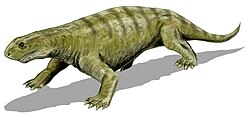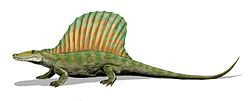| Martensius Temporal range: | |
|---|---|
| Scientific classification | |
| Domain: | Eukaryota |
| Kingdom: | Animalia |
| Phylum: | Chordata |
| Clade: | Synapsida |
| Clade: | † Caseasauria |
| Family: | † Caseidae |
| Genus: | † Martensius Berman et al., 2020 |
| Species: | †M. bromackerensis |
| Binomial name | |
| †Martensius bromackerensis Berman et al., 2020 | |
Martensius is an extinct genus of caseid synapsid from the Early Permian of Germany. The type species is Martensius bromackerensis. [1]





